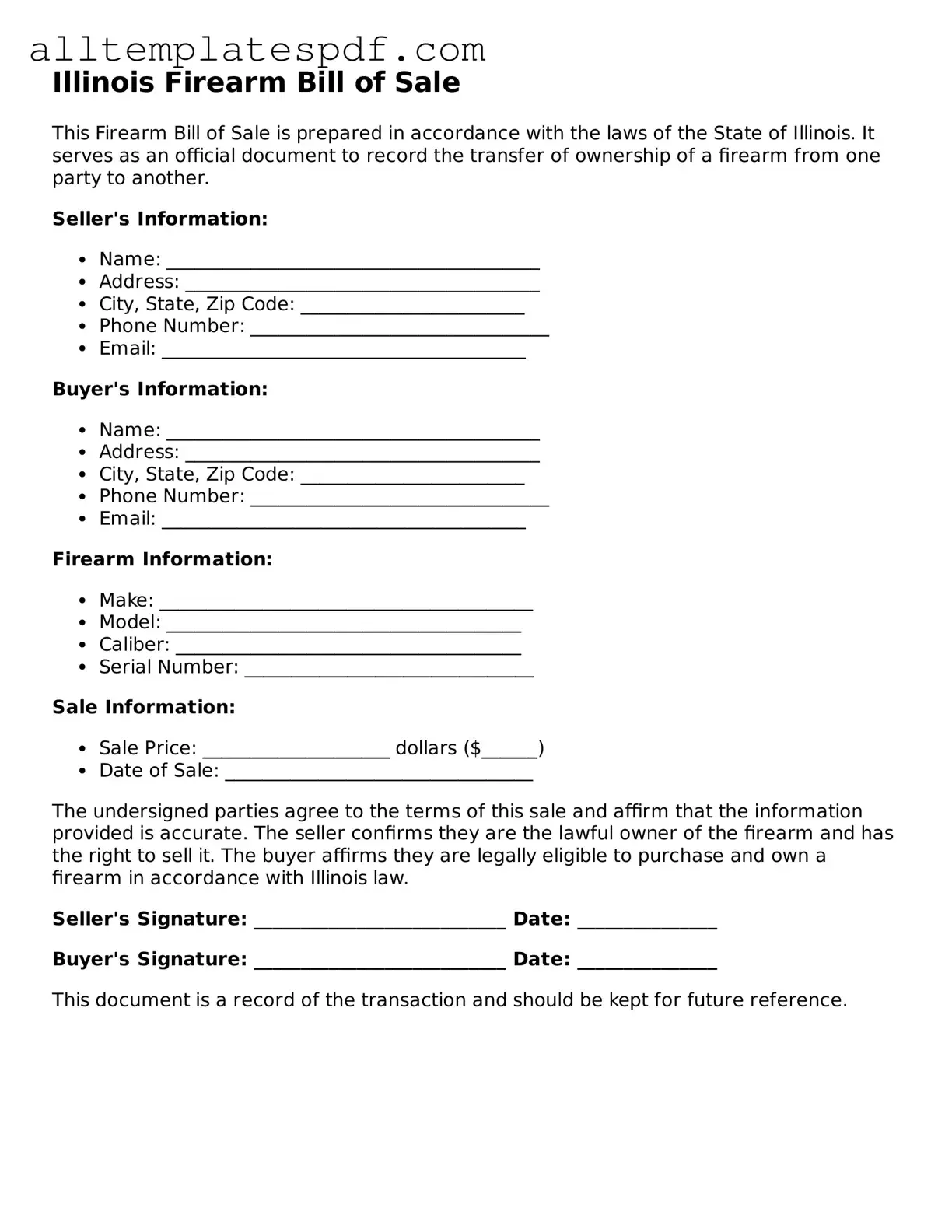When completing the Illinois Firearm Bill of Sale form, individuals often make several common mistakes that can lead to complications. One frequent error is failing to provide accurate information about the firearm being sold. This includes not specifying the make, model, and serial number. Each detail is crucial for proper identification and legal compliance.
Another mistake is neglecting to include the seller's and buyer's full names and addresses. The form requires complete identification of both parties to ensure that the transaction is traceable. Omitting this information can create issues in the future, particularly if there are questions about the transfer.
Many individuals also overlook the necessity of signing the form. Both the seller and the buyer must sign the document to validate the transaction. Without signatures, the form is incomplete and may not hold up if questioned later.
Some people mistakenly assume that a witness is not required. However, having a witness sign the form can provide an additional layer of verification. This is especially important in disputes or if the transaction comes under scrutiny.
Another common error is not dating the form correctly. The date of the transaction is a critical piece of information that must be included. Failing to date the document can lead to confusion about when the sale occurred.
Individuals sometimes forget to provide the appropriate payment details. Whether the transaction is for cash or another form of payment, specifying this information is essential for record-keeping and clarity.
Some sellers do not keep a copy of the completed form for their records. Retaining a copy is vital in case any issues arise after the sale. This documentation can serve as proof of the transaction and protect both parties.
Another mistake involves not checking for any local or state regulations that may apply to the sale. Each jurisdiction may have specific requirements that need to be followed, and failing to adhere to these can result in legal consequences.
Lastly, individuals often rush through the process without reading the entire form carefully. Taking the time to review all sections can prevent errors and ensure that all necessary information is provided. Careful attention to detail can save time and avoid potential issues down the line.
